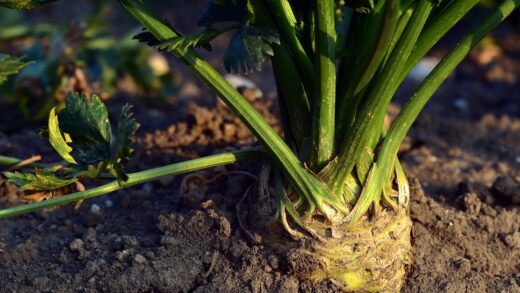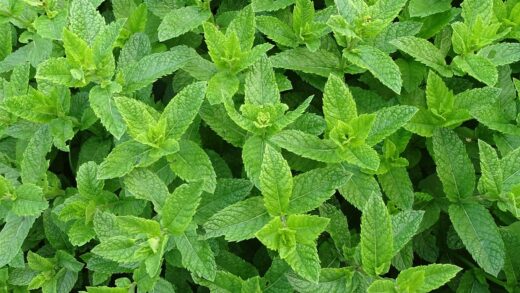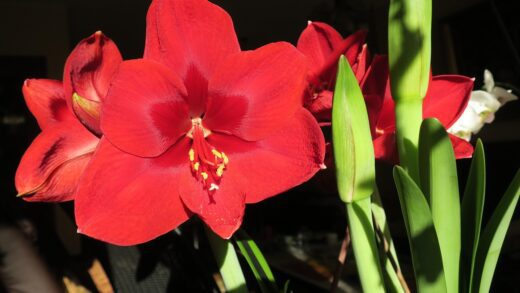Successfully guiding the peach-leaved bellflower through the winter months is a critical aspect of its long-term care, ensuring its robust return and spectacular floral display the following spring. As a hardy perennial, this plant is well-adapted to survive cold temperatures, typically being hardy in USDA zones 3 through 8. However, its survival is not solely dependent on its tolerance to cold; it is equally, if not more so, dependent on the conditions of the soil during its dormant period. The greatest threat to this plant during winter is not the frost itself, but rather the combination of cold and wet soil, which can lead to fatal crown and root rot. Therefore, a successful wintering strategy focuses primarily on ensuring excellent drainage and protecting the plant’s crown from excessive moisture.
The preparation for winter begins in the autumn, well before the first hard frost arrives. The actions taken during this time, such as adjusting watering schedules, performing a final garden cleanup, and deciding whether to apply a protective mulch, can significantly influence the plant’s ability to withstand the stresses of winter. A tidy garden bed, free from diseased debris, reduces the likelihood of pathogens overwintering and re-emerging in the spring. This period of preparation sets the stage for a healthy dormancy, allowing the plant to conserve its energy in its root system, ready for a vigorous burst of growth when the weather warms.
The application of a winter mulch can be a beneficial practice, but it must be done with care and at the right time. The purpose of a winter mulch for a hardy perennial like this is not so much to keep the plant warm, but rather to insulate the soil and protect the plant from the damaging effects of freeze-thaw cycles. These cycles can heave the plant’s crown out of the ground, exposing its roots to freezing temperatures and drying winds. A properly applied mulch helps to maintain a more stable soil temperature, preventing this heaving and protecting the dormant crown.
For those gardening in containers, the approach to wintering the peach-leaved bellflower requires some specific adjustments. The soil in pots is far more exposed to fluctuating temperatures and can freeze solid much more quickly than the ground. This presents a greater risk to the root system. Therefore, container-grown plants often need additional insulation or to be moved to a more sheltered location to ensure they survive the winter unscathed. By understanding these principles, you can provide your bellflowers with the protection they need to endure the dormant season and emerge healthy and strong in the spring.
Autumn preparations for dormancy
As the vibrant colours of summer begin to fade and the cooler temperatures of autumn arrive, the peach-leaved bellflower starts to prepare for its winter dormancy. This is a crucial time for the gardener to assist in this transition. One of the first steps is to gradually reduce supplemental watering. The plant’s growth is slowing down, and its water requirements are diminishing. Allowing the soil to become slightly drier helps to harden off the plant and prepare it for the colder weather ahead. Continuing to water heavily in the autumn can promote late, tender growth that is vulnerable to frost damage and can contribute to the overly wet soil conditions that are so detrimental during winter.
More articles on this topic
A key task in autumn is garden sanitation. After the first few hard frosts have caused the plant’s stems and leaves to die back, it is good practice to cut the dead foliage down to the basal rosette of leaves. This rosette is often semi-evergreen and will persist through much of the winter. Removing the dead stems and leaf litter from around the base of the plant is important because this debris can harbour fungal spores, such as those that cause rust or powdery mildew, as well as the eggs of pests. A thorough cleanup removes these potential sources of infection, ensuring a healthier start for the plant in the spring.
This is also an excellent time to ensure the area around the plant is free from weeds. Weeds can compete with the dormant plant for residual moisture and nutrients and can also provide a habitat for overwintering pests. A final, gentle weeding of the bed in late autumn will leave the area clean and tidy for the winter. However, avoid any deep cultivation near the crown of the plant, as this could disturb the roots as they are settling in for their dormant period.
Before the ground freezes solid, it is wise to do a final check of the soil drainage around your bellflowers. If you have noticed that water tends to pool in that area after heavy rains, now is the time to take corrective action if possible, perhaps by creating a slight channel to divert water away. Ensuring that winter rain and melting snow can drain away freely from the plant’s crown is the single most important factor for its successful overwintering.
The role and application of winter mulch
Mulching your peach-leaved bellflowers for the winter can be highly beneficial, especially in colder climates or in gardens with newly planted specimens. The primary purpose of a winter mulch is not to keep the plant warm, but to insulate the soil. This insulation helps to prevent the repeated freezing and thawing cycles that can occur during the winter. These cycles cause the soil to expand and contract, which can physically push, or “heave,” the crown and roots of the plant up out of the ground, exposing them to desiccating winds and freezing temperatures. A stable, frozen soil temperature under a layer of mulch is much safer for the plant.
More articles on this topic
The timing of the mulch application is critical. You must wait until after the ground has frozen, typically after several hard frosts. Applying the mulch too early, while the ground is still warm, can trap heat and moisture around the crown, which can lead to rot. It can also provide a cosy winter home for rodents like voles, which may then gnaw on the plant’s crown and roots for food. The goal is to keep the frozen ground frozen, not to prevent it from freezing in the first place.
The best materials for a winter mulch are light and airy, allowing for some air circulation while still providing insulation. Good choices include straw, shredded leaves, pine needles, or marsh hay. Avoid heavy, dense materials like wet leaves or thick layers of compost, as these can become compacted, trap too much moisture, and suffocate the crown of the plant, leading to rot. Apply a loose, two to four-inch layer of your chosen mulch over the plant’s crown and the surrounding soil.
In the early spring, as the threat of hard frosts begins to recede, it is important to gradually remove the winter mulch. This allows the sun to warm the soil and encourages the plant to break dormancy and start its new season of growth. Leaving the mulch on for too long can delay the emergence of new shoots and can keep the soil too cool and damp. Rake the mulch away from the crown carefully to avoid damaging the delicate new growth that may be starting to appear.
Winter care for container-grown plants
Peach-leaved bellflowers grown in containers require a different approach to winter care because their root systems are much more vulnerable to the cold. Unlike in the ground, where the large mass of soil provides significant insulation, the soil in a pot can freeze solid relatively quickly. This can damage or kill the roots, leading to the death of the plant. Therefore, additional protection is necessary for container-grown specimens, especially in regions that experience severe winters.
One of the simplest methods of protection is to move the container to a more sheltered location. Placing the pot against a north-facing wall or in a corner can protect it from the harsh winter sun, which can cause premature thawing, and from cold, drying winds. Grouping several containers together can also help them to insulate each other. If you have an unheated garage, shed, or cold frame, these are ideal locations to store the pots for the winter. The goal is to keep the roots cold and dormant, but to protect them from the most extreme freezing temperatures. The plant does not need light during its dormancy.
If the container must remain in an exposed location, you will need to provide it with insulation. You can wrap the outside of the pot with several layers of bubble wrap or burlap, or you can create a temporary “cage” of chicken wire around the pot and fill the space between the cage and the pot with insulating material like straw or shredded leaves. Another technique is to “heel in” the pot, which involves digging a hole in an empty part of a garden bed and sinking the entire pot into the ground up to its rim. The surrounding soil will then provide the necessary insulation for the roots.
Watering for container-grown plants during the winter should be minimal. The soil should be checked periodically, perhaps once a month, and if it is completely dry, it should be given just enough water to be slightly moist. A dormant plant uses very little water, and overly wet soil in a pot is very likely to lead to root rot. When spring arrives, you can move the pot back to its sunny location and gradually increase watering as the new growth begins to emerge.
Recognizing and preventing winter damage
The most common form of winter damage to the peach-leaved bellflower is crown rot, caused by excessive moisture. The symptoms will not be apparent until the spring, when the plant either fails to emerge or the new growth that does appear is weak, yellowed, and quickly collapses. When you inspect the base of the plant, you will find a soft, mushy, and decayed crown. As has been emphasized, the only way to prevent this is to ensure the plant is sited in well-drained soil from the outset.
Frost heaving is another significant risk, particularly for plants that are young or have been recently divided in the autumn. You can identify this problem in late winter or early spring by visually inspecting the plant. If the crown appears to be sitting higher out of the soil than it was in the autumn, and if some of the roots are visible on the surface, it has likely been heaved by frost. If you find this has happened, you can gently press the crown back down into the soil and cover any exposed roots with a light layer of soil or compost. This should be done as early as possible to prevent the roots from drying out.
Damage from rodents, such as voles or mice, can also occur during the winter, especially under a protective layer of mulch or snow. These animals can tunnel under the cover and feed on the crown and roots of the dormant plant. You may not notice the damage until the spring when the plant fails to thrive. To minimize this risk, avoid applying winter mulch too early in the autumn, as this can encourage rodents to nest there before the ground is frozen. Keeping the area around your garden beds tidy and free from long grass can also help to reduce the rodent population.
In essence, a successful wintering strategy is proactive rather than reactive. By taking the appropriate steps in the autumn—ensuring good drainage, cleaning up plant debris, and applying mulch at the correct time—you provide your peach-leaved bellflowers with the best possible chance of not just surviving the winter, but emerging in the spring with the health and vigour needed to produce a stunning display of flowers.


















